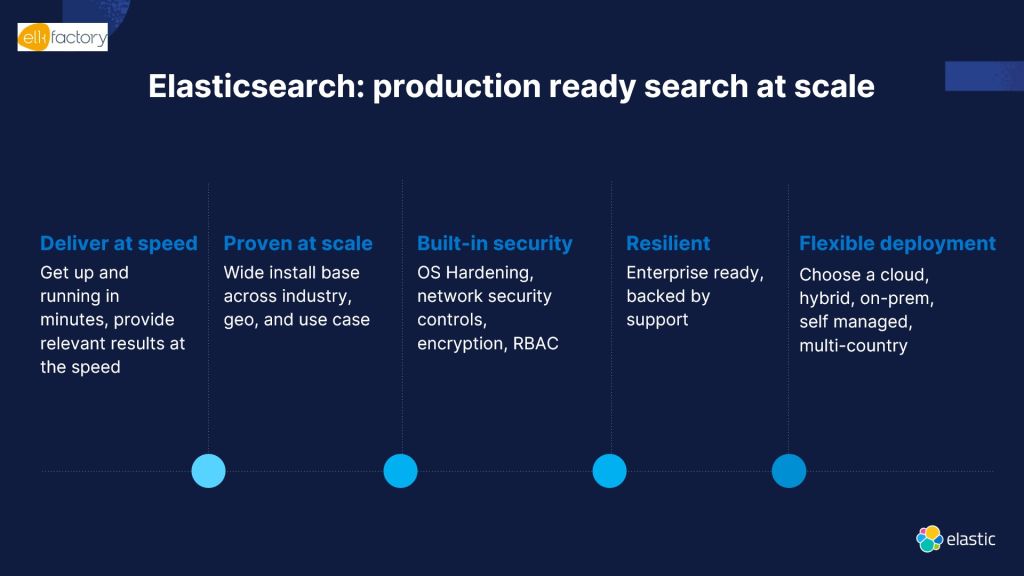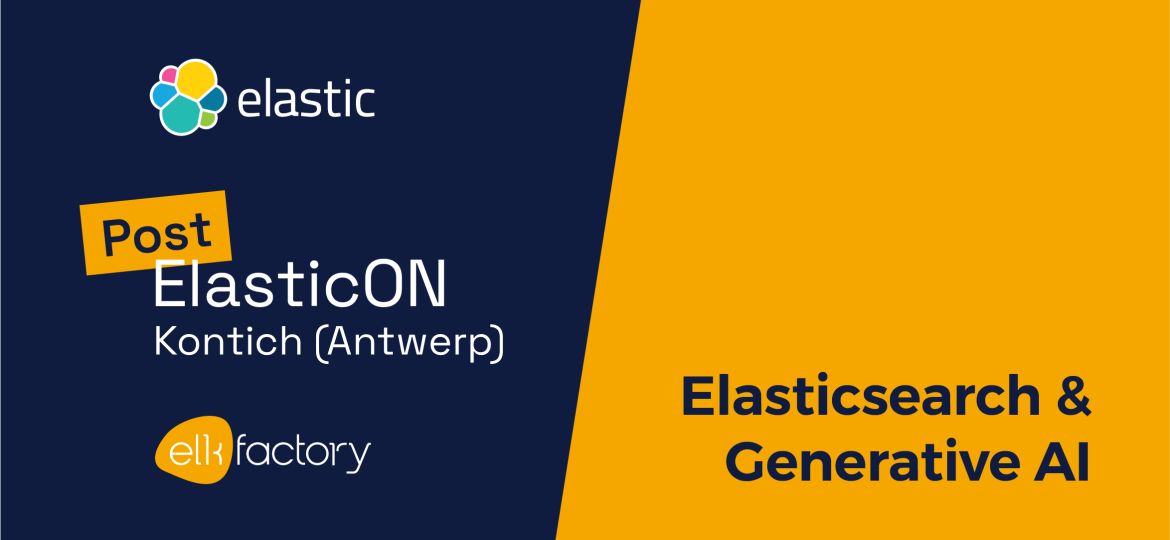
ELASTICSearch & Generative AI
The quest for searching and retrieving information has become an integral part of our daily lives. As technology advances, so do the expectations and requirements. This blog explores the transformative capabilities of Elasticsearch, a robust solution that not only meets traditional search needs but also paves the way for groundbreaking applications in the era of Artificial Intelligence (AI).
Traditional Search to Geo-Location Integration
The journey begins with understanding the foundational elements of search projects. Traditional requirements include facets search for result filtering and typeahead for suggestions during the search process. About a decade ago, the advent of the mobile era introduced new challenges, particularly in incorporating geo-location into search algorithms. Elastic, a robust solution, emerged to address these challenges, also offering capabilities such as synonym management, automatic language recognition, and in-depth statistics on search queries.


Elasticsearch in the Spotlight
Search powered by Elasticsearch has become ubiquitous. Even in applications that may not seem to have a search function, Elasticsearch is at work behind the scenes. Popular companies, including Netflix, Tinder, and Uber, rely on Elasticsearch as their search engine. The staggering numbers speak for themselves, with 4.28 trillion downloads and over 6 trillion daily search queries sent to the Elastic Cloud platform. Elasticsearch has become the ‘de facto’ standard for search engines, setting the benchmark in the industry.


Elasticsearch and AI
The capabilities of AI mark the beginning of a new era, and Elasticsearch stands out as a fundamental infrastructure for success in AI applications. Machine learning, including algorithms for image and speech recognition, has been in existence for some time. The emergence of Generative AI introduces new possibilities, such as image, music and text generation.
A closer look at the differences between traditional “keyword search” and “AI-powered search results and answers” reveal the transformative potential of the AI-powered elasticsearch. We highlight the improved results delivered by AI-powered searches, making it clear why industries are increasingly adopting this technology.


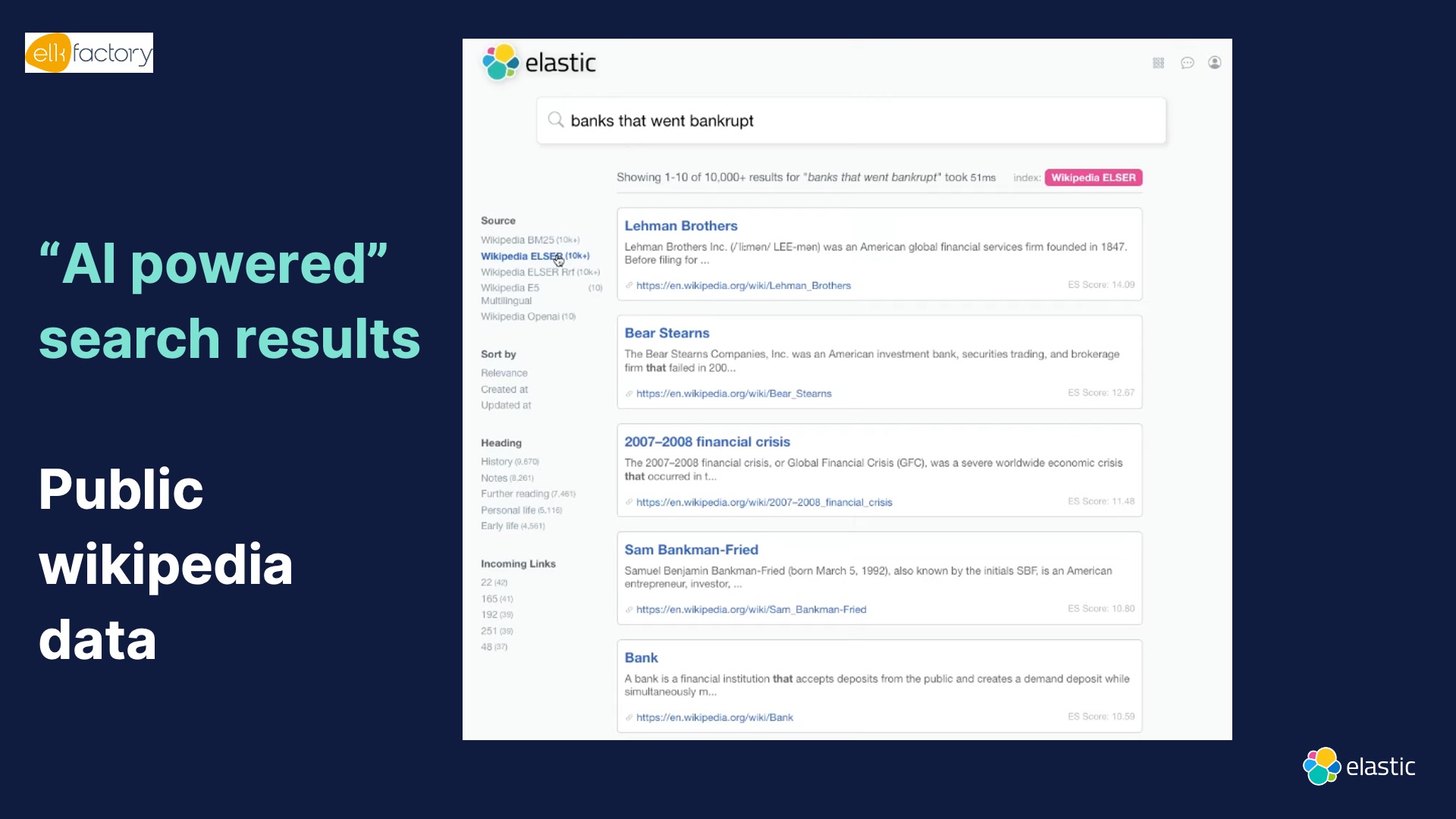

Note that the above results are obtained using out of the box elasticsearch functionalities. In the examples below the out the box elastic functionalities, including its security features, are combined with Generative AI to formulate the answers.






Elasticsearch and Gen AI at Cisco
The real-world success story of Elasticsearch and Generative AI at Cisco, known as “topic search,” underscores the transformative impact. With nearly 90% of service requests receiving immediate solutions, the integration of Elasticsearch and Gen AI enhances customer experience significantly.
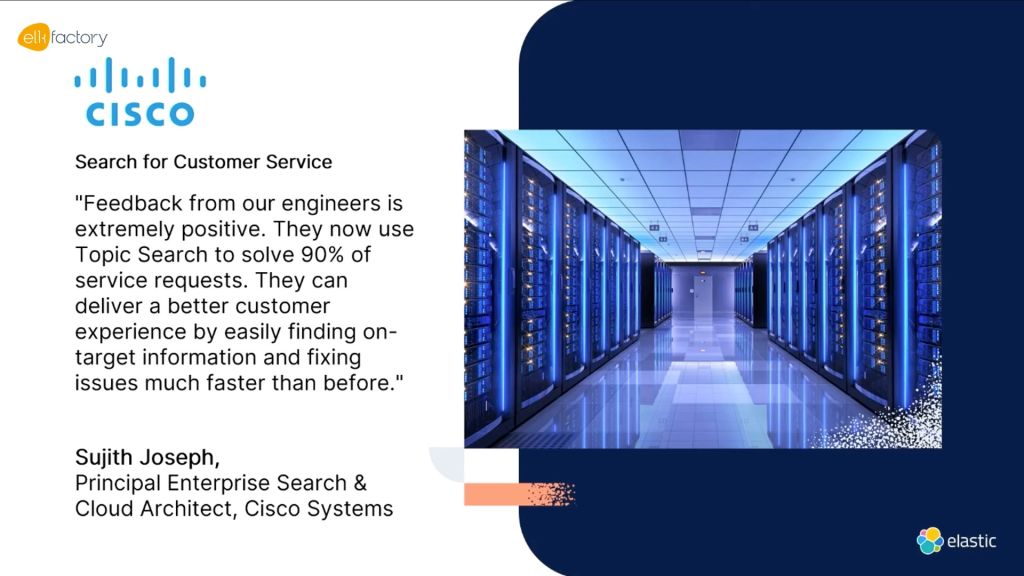

AI-Powered Search in Diverse Domains
The advantages of AI-powered search extend to various domains, from telecom providers and energy companies streamlining helpdesk operations to e-commerce stores offering personalized recommendations based on user-uploaded images. For example, in the e-shop of a clothing store, a visitor could upload a photo of a celebrity, asking which similar clothing the respective store can offer. In the context of predictive maintenance, for instance, sensor data can be combined with customer reviews to identify where repairs are needed first.
Contemplate the challenges you face, and how Elasticsearch combined with AI could offer transformative solutions.


Challenges and Solutions
To identify the most relevant use cases for your organization, consider the data at your disposal. In a support or service desk context, making manuals not only fully text-searchable but also accessible with AI-powered search can be beneficial, enabling immediate responses to queries. Ticketing systems often contain valuable data about problems and solutions, facilitating quicker answers for users or customers. SLA documents, providing information on who to contact for specific issues, can be valuable in a support context. In an e-commerce setting, incorporating data such as previous interactions, purchases, and inventory levels into the search context can offer valuable insights.
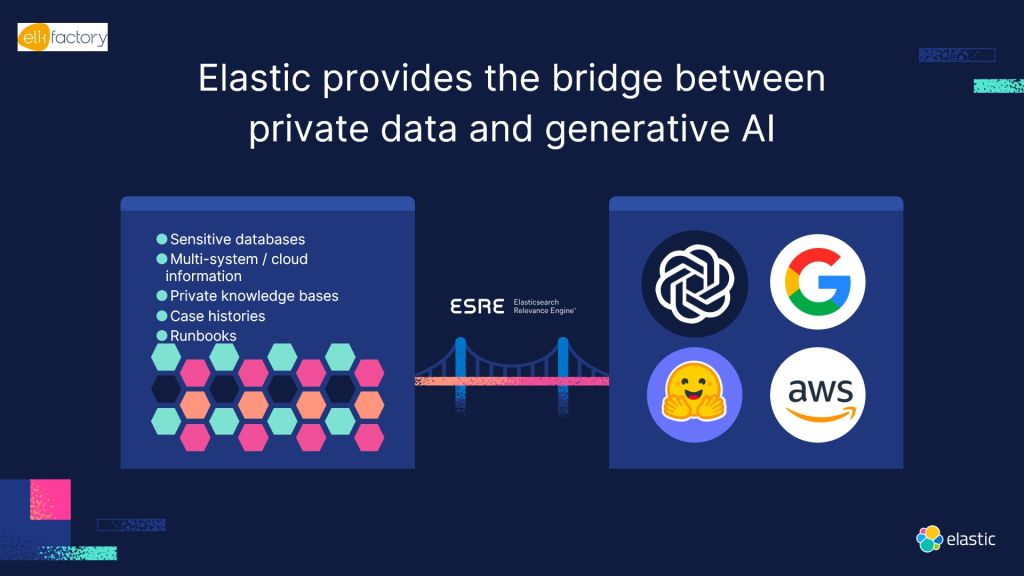

The promises of AI come with their own set of challenges. Implementing AI often requires a complex tech stack, and training models is a time-consuming and costly process. Elastic addresses these challenges head-on, offering solutions that ensure data security, privacy, and effective implementation of AI models.
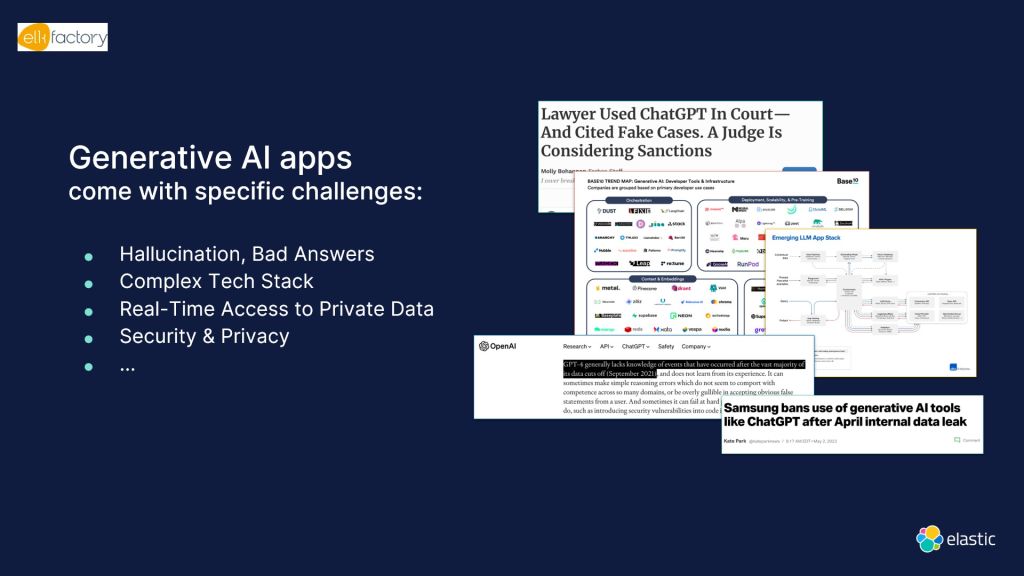

RAG Pattern and ESRE: Streamlining AI Integration
To combat hallucinations in AI, the Retrieval Augmentation Generation (RAG) pattern is introduced, an architecture designed to prevent LLMs (such as ChatGPT) from hallucinating. RAG achieves this by adding additional context to the data related to the question/answer pair.
For a business solution, the RAG architecture implies restricting generative AI to your business content derived from vectorized documents, images, audio, and video (as demonstrated with elastic data earlier). Implementing RAG requires a data store containing both data and context, a vector database, and a search engine. This gives rise to the perception that it might involve a complex tech stack.
This outlines the RAG architecture.
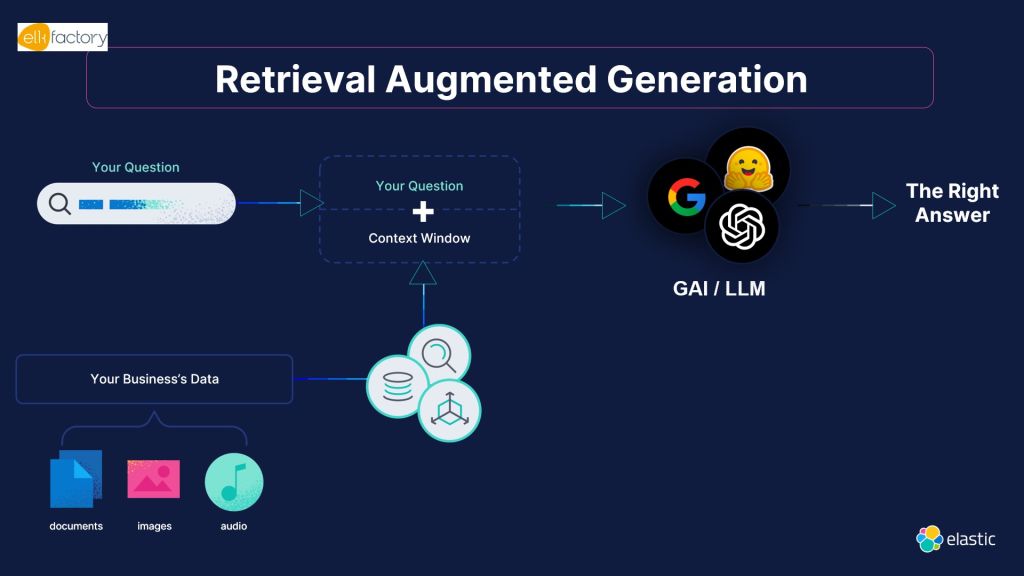

Elastic simplifies the process with ESRE, eliminating the need for a convoluted infrastructure. In contrast to other solutions, Elasticsearch stands out by providing out-of-the-box storage, a vector database, and a powerful search and relevance engine.
Importantly, within the GDPR framework, it’s worth noting that with the Elastic capabilities you can anonymize data before sending it to the GAI/LLM outside Elastic.
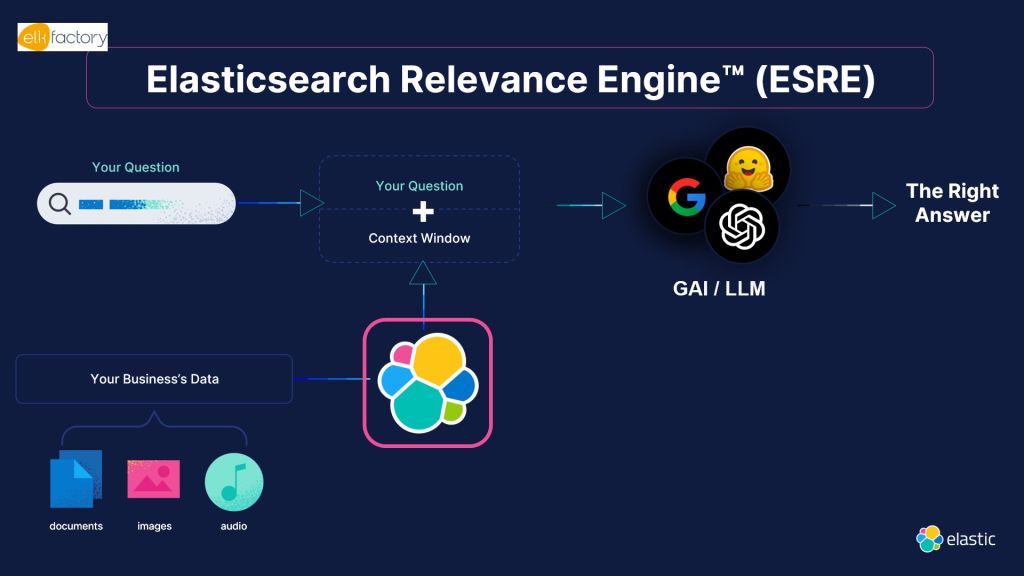

Elasticsearch Relevance Engine
The Elasticsearch Relevance Engine (ESRE™) is highlighted as a result of years of research and development by Elastic. Developers gain access to a comprehensive set of tools for building AI-powered search applications, including both traditional and vector database-driven searches. The engine features RRF (reciprocal rank fusion) for hybrid ranking, offering the best of both worlds.



Ingredients for AI-Powered Search Experiences: Understanding Vectors
A closer look at the necessary ingredients for AI-powered search experiences involves understanding vectors. These multidimensional numerical representations of unstructured data (text, images, audio, and videos) form the backbone of effective AI-driven search.
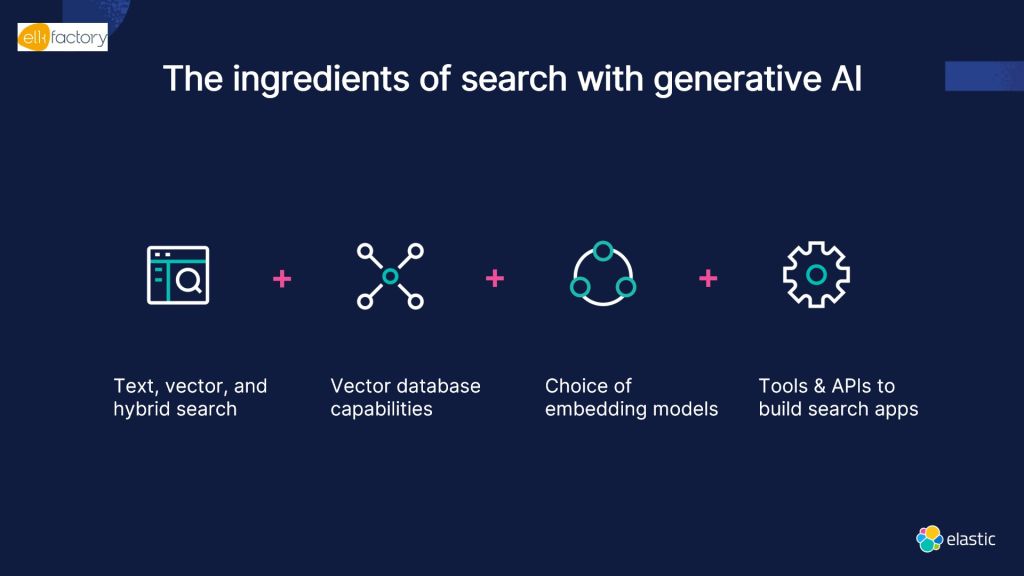

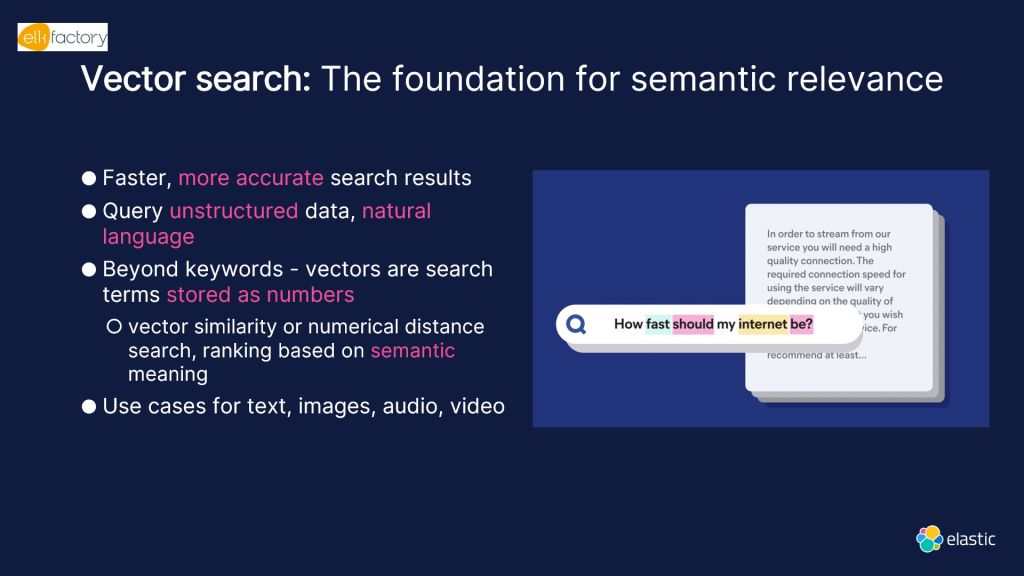

ELSER
We introduce the concept of embeddings and vectors, highlighting Elastic’s out-of-the-box ELSER model. ELSER, now available for English and already trained by Elastic, provides excellent results (cfr the screenshots above). Other languages will follow soon and note that you can upload 3rd party models or your own models in elastic.
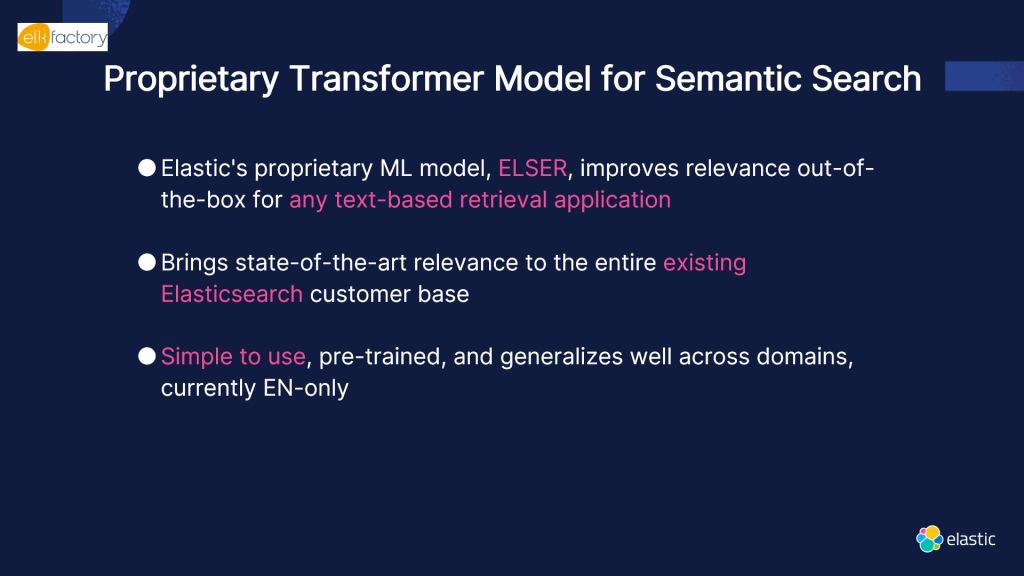

Elastic’s Versatility Beyond Vectors
Elastic’s open platform approach emphasizes its adaptability. Whether in the cloud, on-premises or in hybrid environments, Elastic goes beyond just being a vector database, offering numerous integrations to unlock various data sources and more.
Elastic not only has a vector database necessary for building Generative AI applications. Elastic can do much more! Elastic can be used, for instance, in the cloud, on-premises, and even in hybrid environments. It offers numerous integrations to easily unlock various data sources, and so on…


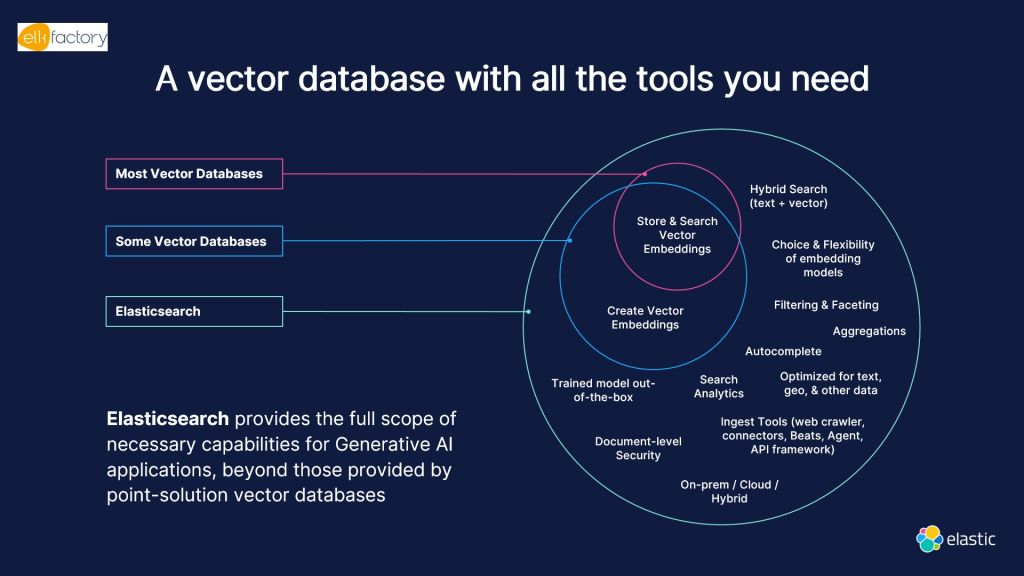

Navigating Search Architectures
We conclude by revisiting typical search architectures with Elastic Bm25 text search. It emphasizes the flexibility of Elasticsearch by allowing users to generate models both inside and outside Elastic, providing three distinct paths, all working seamlessly with the familiar Elasticsearch API.
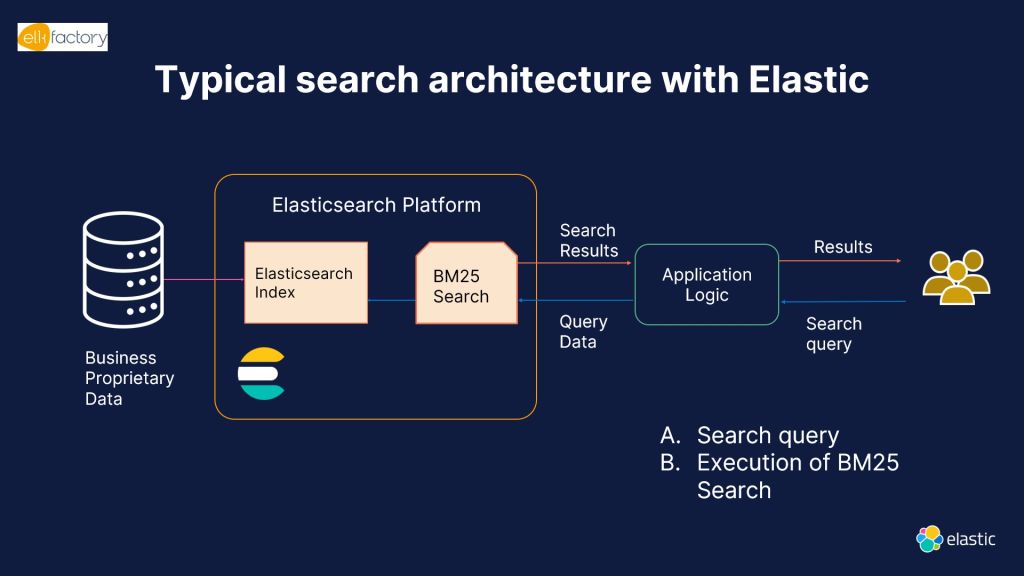

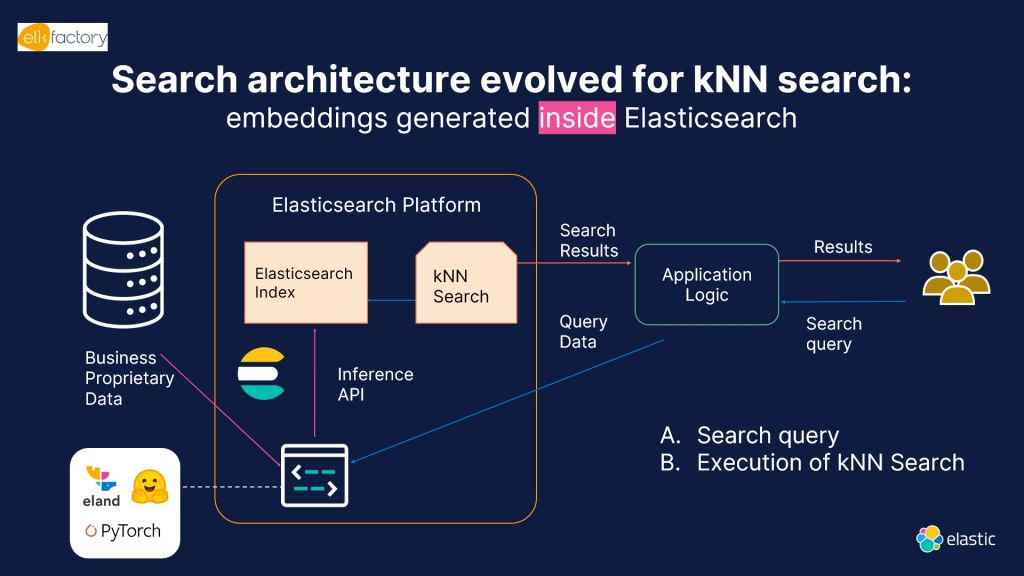

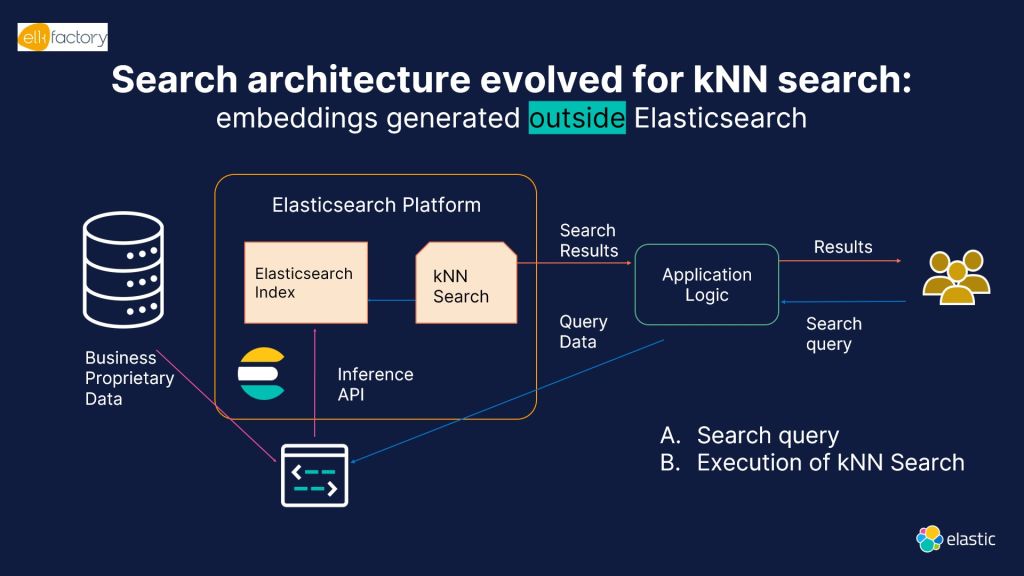

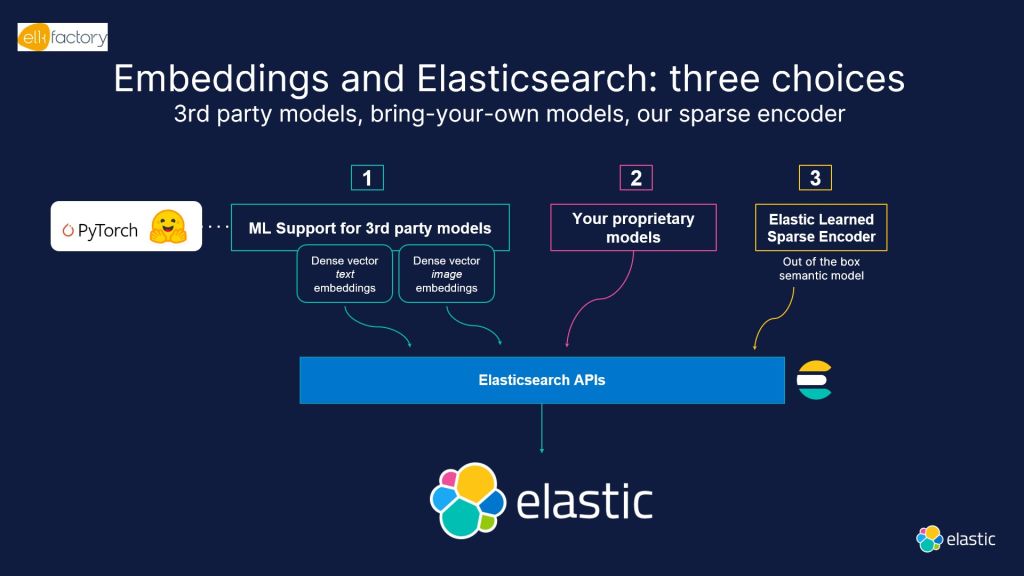

Embarking on GEN AI with Elastic
For organizations looking to embark on their AI journey, we outline crucial steps.
Step 1, data consolidation. By bringing all your data together in one place, possibly with the help of the many out-of-the-box Elastic integrations, you can merge data from different data systems and services.
Step 2 is creating a secure data layer. By incorporating role-based access and security at field/level and document levels, only the right people have the right access to information. Elastic also includes comprehensive monitoring and audit capabilities to understand how people are using the data platform. This allows monitoring of platform performance and potential misuse.
Step 3 is the transition from textual searching to semantic and hybrid searching.
Step 4, now we are ready to apply generative AI to these domain-specific data. By integrating this data with a large language model, it becomes possible to interact with this data in a new way.
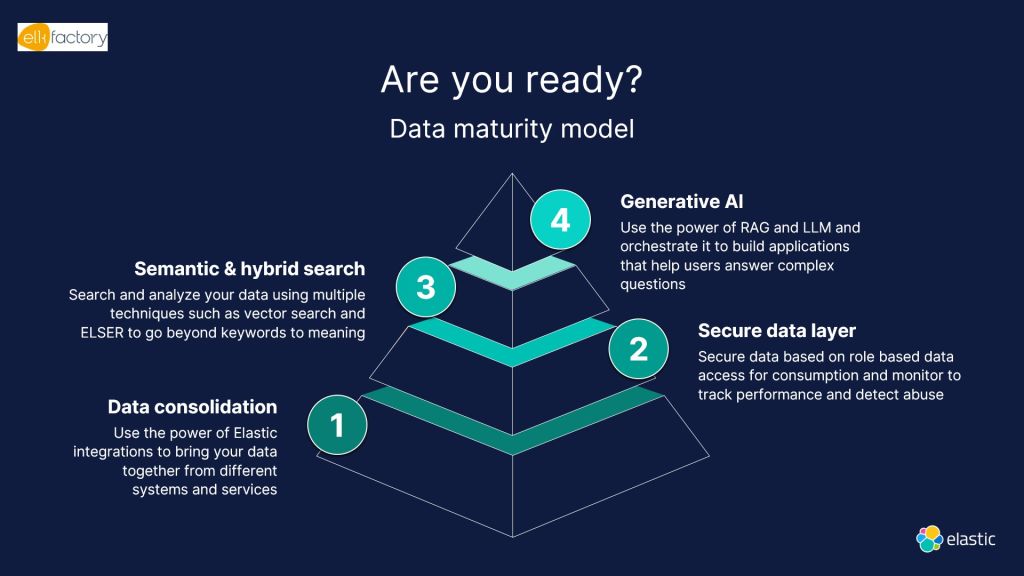

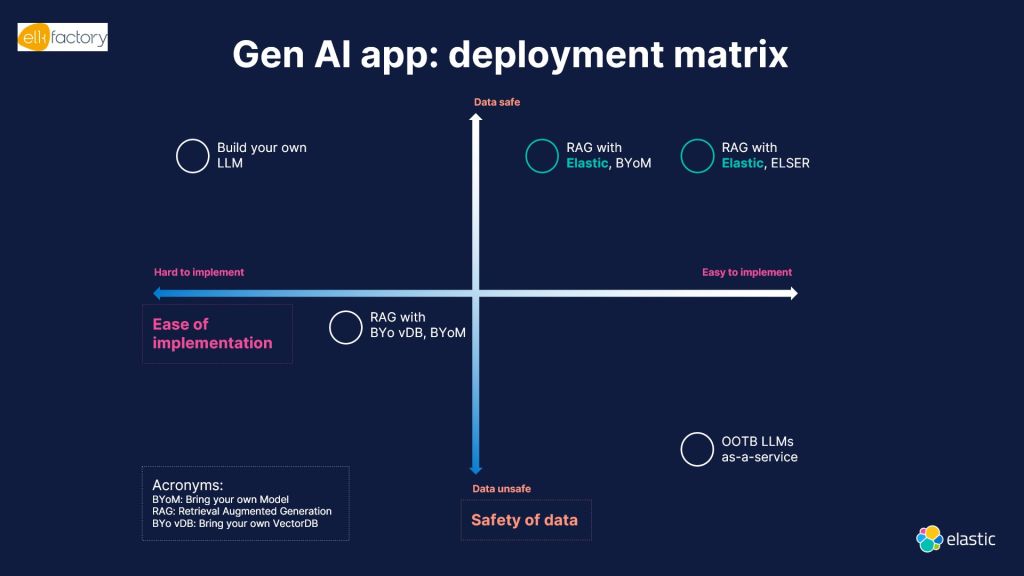

Elasticsearch, Innovation in Search & AI
Elasticsearch stands out as a pillar of innovation in the realm of search and AI. Its seamless integration with AI technologies opens new frontiers, promising a future where information retrieval is not just efficient but also intelligent and transformative.
